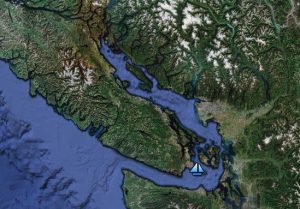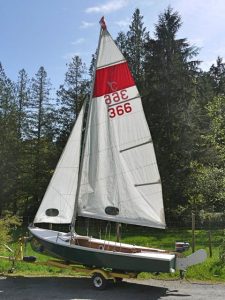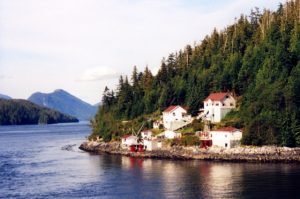Canada
 The Canadian Boats were all amateur constructed, and their branch of the SDCA was formed in 1970 with most of the boats based in Victoria on Vancouver Island in British Columbia.
The Canadian Boats were all amateur constructed, and their branch of the SDCA was formed in 1970 with most of the boats based in Victoria on Vancouver Island in British Columbia.
The 1971 (UK) SDCA Handbook contained the following “News from Western Canada Seafly Owners” written by the class secretary Tony Sayle:
| It all started out here in 1962 when Roger Vale needed a boat. He saw a Seafly advertisement, liked it, built it, and Western Canada hasn’t looked back since.
We are obviously making progress, though slowly. Personally I prefer it this way, because it’s too good a boat to be just an “over- advertised and then soon over” fad. Now, what kind of conditions do we sail under here? Well, first of all it’s generally in fairly sheltered water in the sea in one of the bays or harbours around Victoria city or in between the many islands of the Gulf Island chain. We also sail in several of the nearby freshwater lakes. The wind velocities that we race in are typically below 10 m.p.h. (i.e.. Force 1 and 2) in the summer and up to Force 5 or 6 in the winter. This isn’t always the case, however. I remember one summer regatta with winds over 30 and peak gusts of 38-40 m.p.h. (Yes, the Seafly can plane under jib alone!) Sailing is all the year round here, with a typical racing programme being two interlocking series (on alternate weekends) from mid- September to mid-December, two more from January to March, and one for May and June. Winter regattas are not popular – the water and weather are too cold – but major races are held from February through April. The summer regatta circuits run from May through September.  Seafly 366 is a Canadian Seafly still sailing (more details) Not all of the Seafly owners are race inclined. We are a mixed bunch. One prefers day sailing and seems happiest when himself, his wife and five kids, and maybe an uncle or two, are out in lots of wind on a broad reach between the islands. Another keeps his boat on a large lake (about 20 miles long) and brags about the afternoon wind and the floating logs from nearby timber operations. He has holes to prove it, too!Most of us like to race – some a little, some a lot – and are divided by belonging to two separate clubs. One of these has keen racing competition, and we often find ourselves taking on the Fireballs. They seem to find this frustrating, particularly as we seem to have the legs of them when off the wind. The other club is designed to get people interested in sailing, and here we are probably getting our soundest advertising. Parents, seeing their kids in them, are trying them themselves and getting bitten by the ” bug.” This is what is going to give us a stable Seafly Association as the years roll by. It is probably interesting to note that all our boats are home made by their current owners. This is mostly of necessity because we can build at least two boats for the price of an imported one. We also have advantages in materials available such as 16-feet lengths of plywood and full-length clear Sitka spruce for masts and booms. Fibreglass cloth and resin are commonly used for reinforcing seams, and some use it to give better hull bottom finish. Our organisation is a very free-and-easy one. We had a meeting once. It was enough. Roger Vale was obviously the man for class captain, and I was somehow appointed chief scribe. There should be another meeting soon – if we can stop sailing long enough to get together. |
[Next: Wewak, Papua New Guinea]

